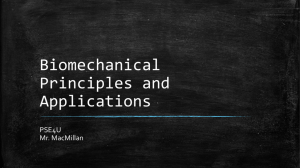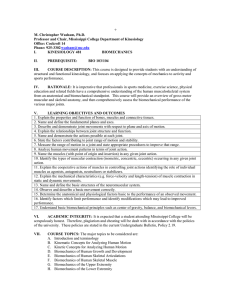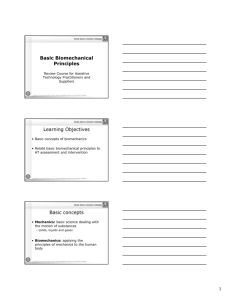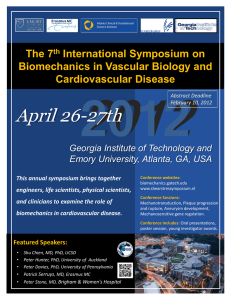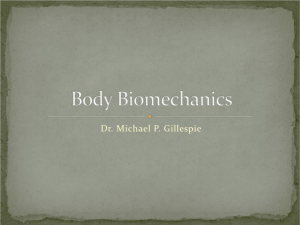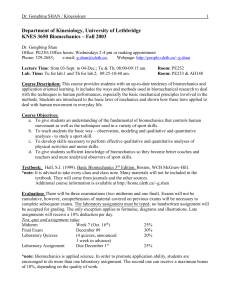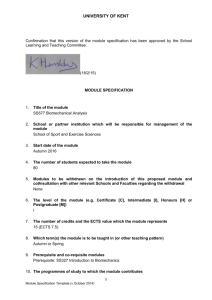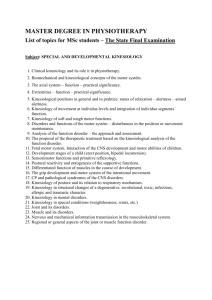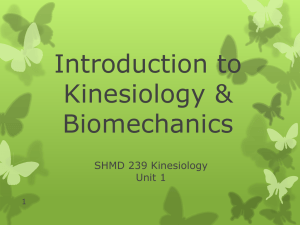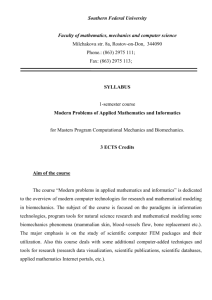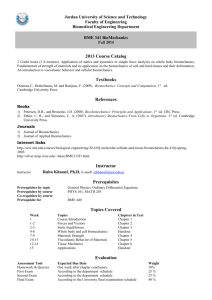Spring 2007 - University of Toledo
advertisement
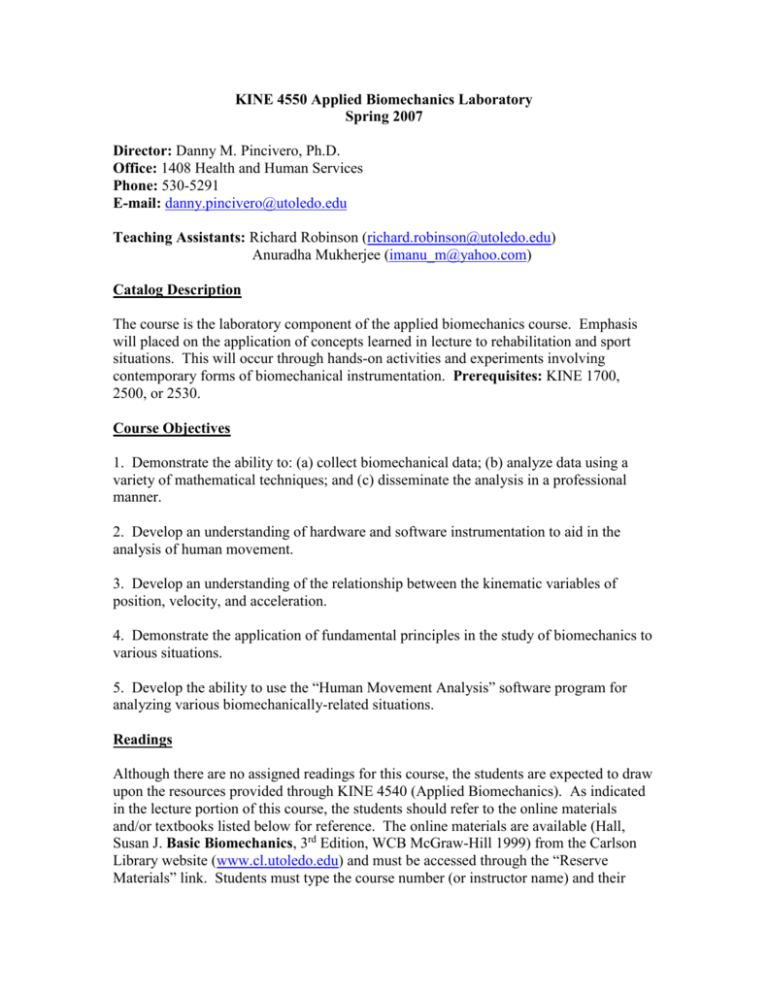
KINE 4550 Applied Biomechanics Laboratory Spring 2007 Director: Danny M. Pincivero, Ph.D. Office: 1408 Health and Human Services Phone: 530-5291 E-mail: danny.pincivero@utoledo.edu Teaching Assistants: Richard Robinson (richard.robinson@utoledo.edu) Anuradha Mukherjee (imanu_m@yahoo.com) Catalog Description The course is the laboratory component of the applied biomechanics course. Emphasis will placed on the application of concepts learned in lecture to rehabilitation and sport situations. This will occur through hands-on activities and experiments involving contemporary forms of biomechanical instrumentation. Prerequisites: KINE 1700, 2500, or 2530. Course Objectives 1. Demonstrate the ability to: (a) collect biomechanical data; (b) analyze data using a variety of mathematical techniques; and (c) disseminate the analysis in a professional manner. 2. Develop an understanding of hardware and software instrumentation to aid in the analysis of human movement. 3. Develop an understanding of the relationship between the kinematic variables of position, velocity, and acceleration. 4. Demonstrate the application of fundamental principles in the study of biomechanics to various situations. 5. Develop the ability to use the “Human Movement Analysis” software program for analyzing various biomechanically-related situations. Readings Although there are no assigned readings for this course, the students are expected to draw upon the resources provided through KINE 4540 (Applied Biomechanics). As indicated in the lecture portion of this course, the students should refer to the online materials and/or textbooks listed below for reference. The online materials are available (Hall, Susan J. Basic Biomechanics, 3rd Edition, WCB McGraw-Hill 1999) from the Carlson Library website (www.cl.utoledo.edu) and must be accessed through the “Reserve Materials” link. Students must type the course number (or instructor name) and their student number at this website in order to access the readings. Any of the following texts are valuable references: Hamill J, Knutzen KM. Biomechanical basis of human movement. 2nd Edition. Lippincott, Williams, and Wilkins. 2003. (ISBN: 0-7817-3405-3) Serway RA, Faughn JS. College Physics (Volume I) 6th Edition. ThomsonBrooks, Cole Publishers, 2003. Enoka RM. Neuromechanics of human movement. 3rd Edition. Human Kinetics Publishers. 2002. (ISBN: 0-7360-0251-0) Grabiner MD. Current issues in biomechanics. Human Kinetics Publishers. 1993. (ISBN: 0-87322-387) Nigg BM, Herzog W. Biomechanics of the musculoskeletal system. 2nd Edition. John Wiley & Sons. 1999. (ISBN: 0-471-0251-0) Computer Resources This course will use a computer software program (HU-MAN) that will assist in the analysis of human movement. Students can familiarize themselves with the program at the following website (http://www.hma-tech.com/) . Students with a valid UTAD computer account will be able to access this program in the Department of Kinesiology computer lab (HH 2501). Students are also able to purchase an on-line version of the software through the preceding website for out-of-class work. Course Requirements and Policies 1) Class Attendance: Attendance at the scheduled labs is mandatory. Excused absences will only be granted for illness, family emergencies, and school-related obligations. Attendance will comprise 10% of your final grade. 2) Laboratory Assignments: Students are required to complete laboratory assignments by the designated due data unless a valid excuse can be provided (see “class attendance” above for what constitutes valid excuses). Students may be required to download and print the laboratory assignments from following website: (http://www.hhs.utoledo.edu/kinesiology/kine_classlinks.html) 3) Plagiarism and academic dishonesty: Students are responsible for following the guidelines in the UT student handbook and the College of Health and Human Services regarding plagiarism and academic dishonesty. Students that violate these policies may automatically receive a grade of “F” and may be subject to other disciplinary procedures by Department of Kinesiology, the College of Health and Human Services, and/or the University of Toledo. Course Content Outline (tentative; order and content of labs is subject to change) HU-M-AN labs Measuring Coordination Affordances Qualitative Assessment: Developmental sequences Constraints Gait Analysis Velocity and acceleration lab Biomechanics research Evaluation Procedures Laboratory Assignments = 90% Attendance = 10% Grading Scale A ≥90% A- = 85-89% B+ = 80-84% B = 75-79% C+ = 70-74% C = 65-69% D+ = 60-64% D = 55-59% F<55%
